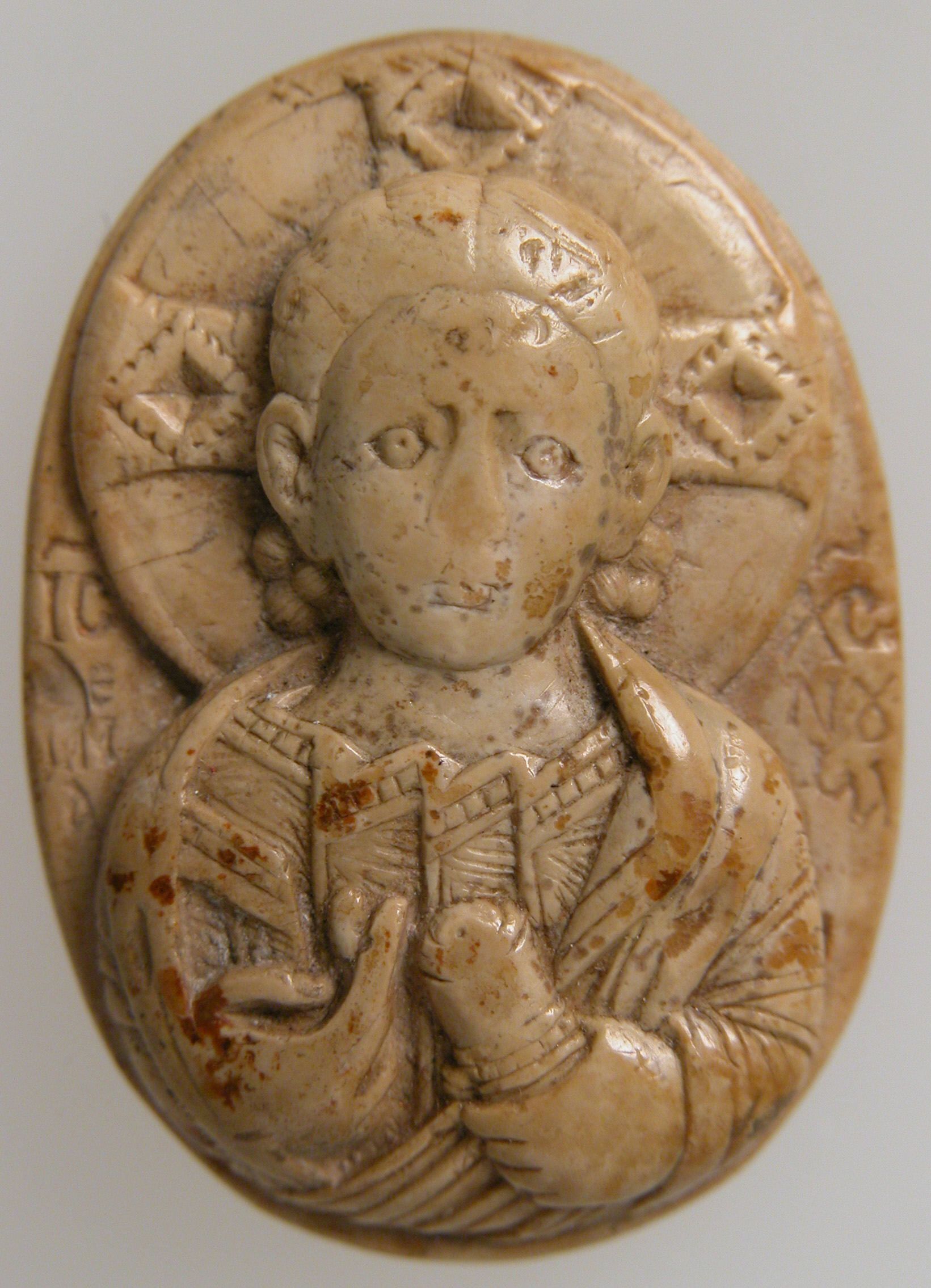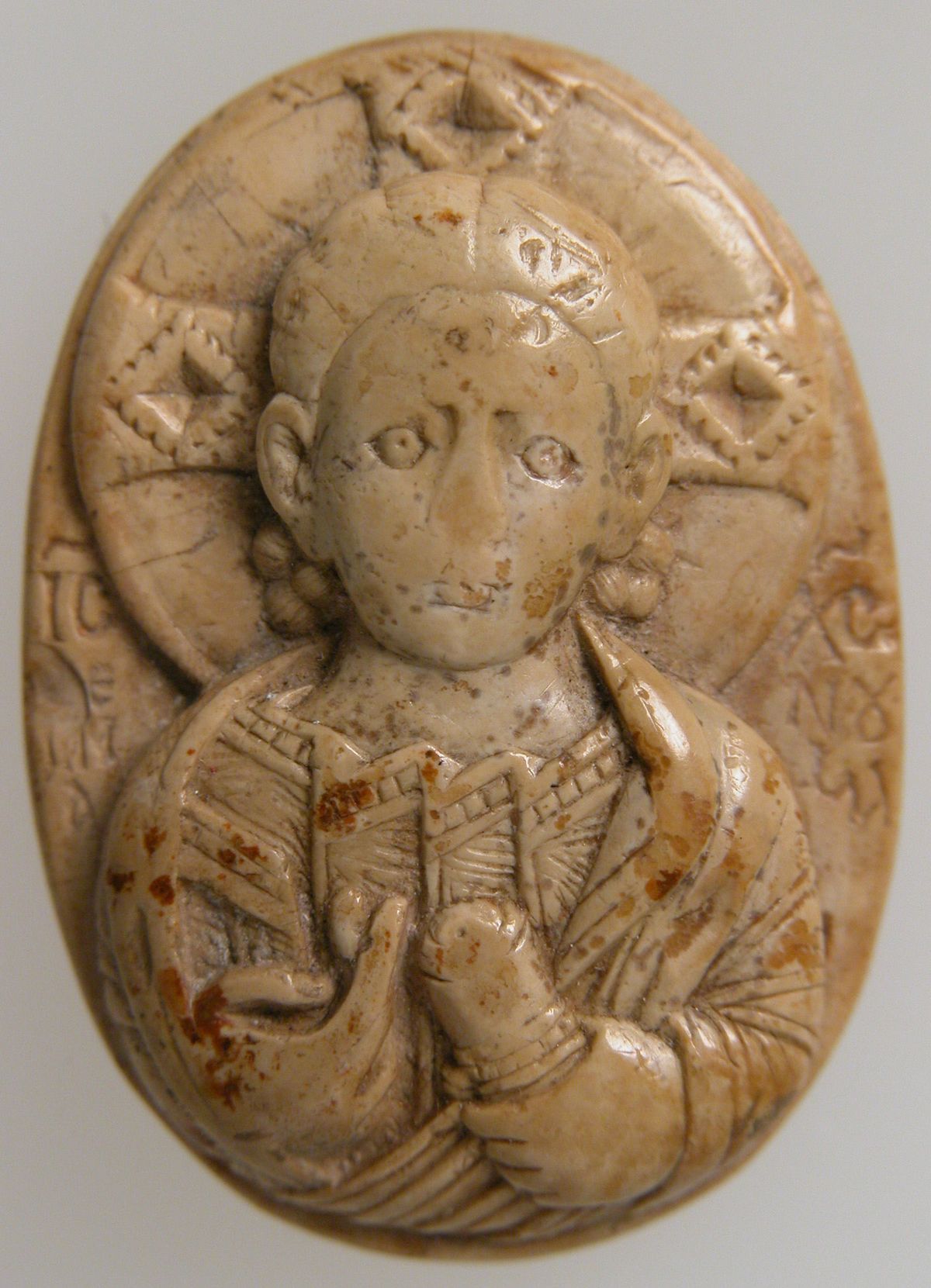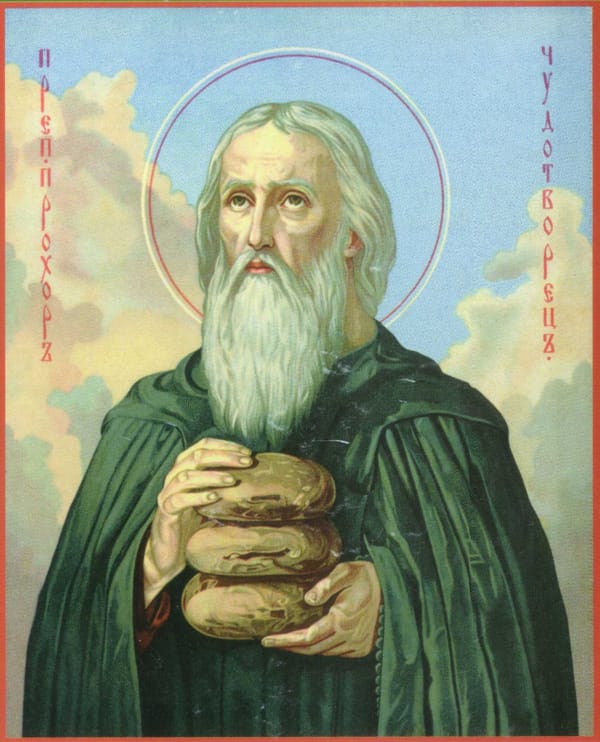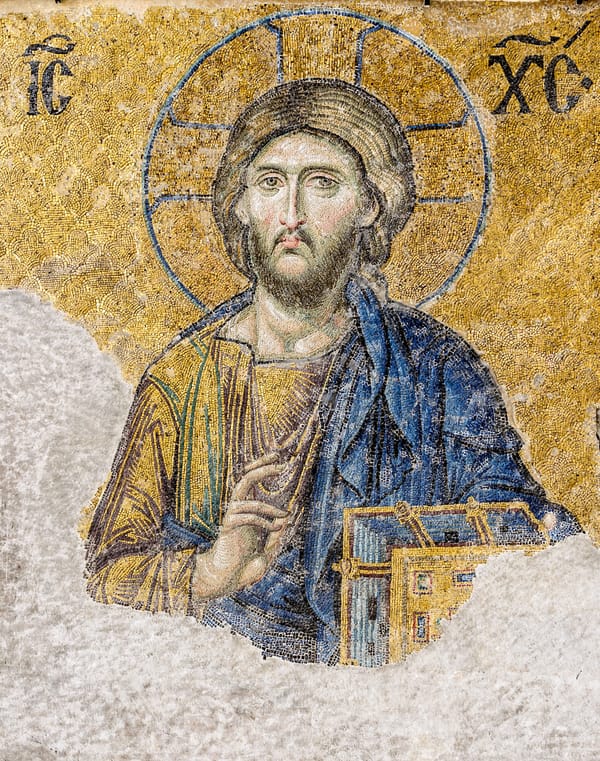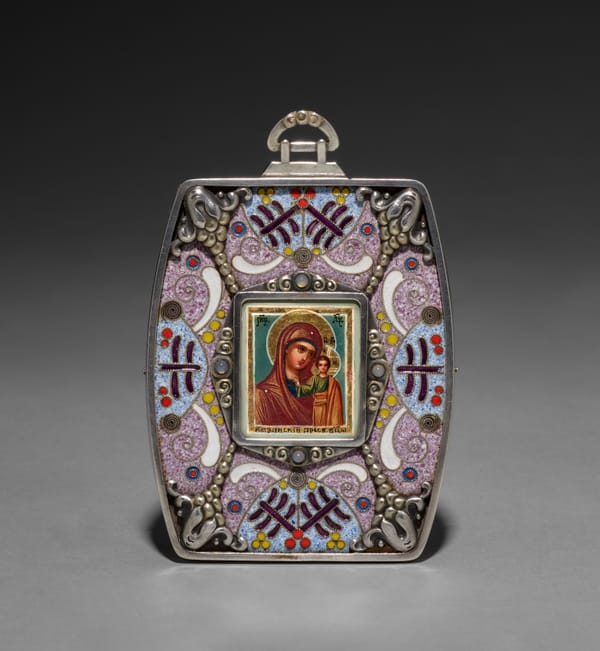About the Image:
The image features a Byzantine cameo depicting Christ Emmanuel, dating from between 1200 and 1400. Cameos are typically small, carved gems that have been valued as art objects since ancient times. This piece is particularly notable for its representation of Christ as Emmanuel, a title meaning "God with us" and often used to emphasize the divine nature of Christ from a Christian theological perspective.
The carving is executed with delicate precision, showcasing the artisan's skill at creating depth and dimension on such a small, hard surface. The facial features of Christ are rendered with a stylized solemnity, which is characteristic of Byzantine art, emphasizing a spiritual rather than naturalistic representation.
Byzantine cameos like this were often used as personal devotional items or set into ecclesiastical objects such as book covers, reliquaries, or icons, underscoring their religious and cultural significance. The artistry seen here reflects the Byzantine Empire's sophisticated tradition of carving and the importance of iconography in its art. The medium of ivory indicates it was a luxury object, as ivory was a valuable material reserved for high-quality works of art.
The condition of the cameo, with visible signs of age but retaining clear detail, suggests it has been well preserved, allowing us to appreciate the craftsmanship of a bygone era. It's a testament to the enduring legacy of Byzantine art, known for its deep religious significance and its influence on the development of Christian art throughout Europe and the Mediterranean.
